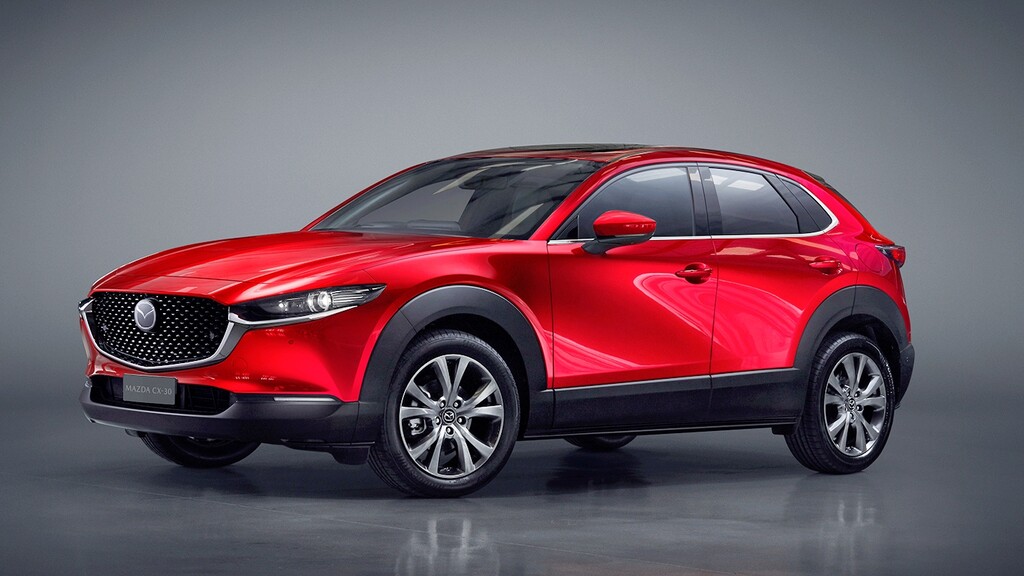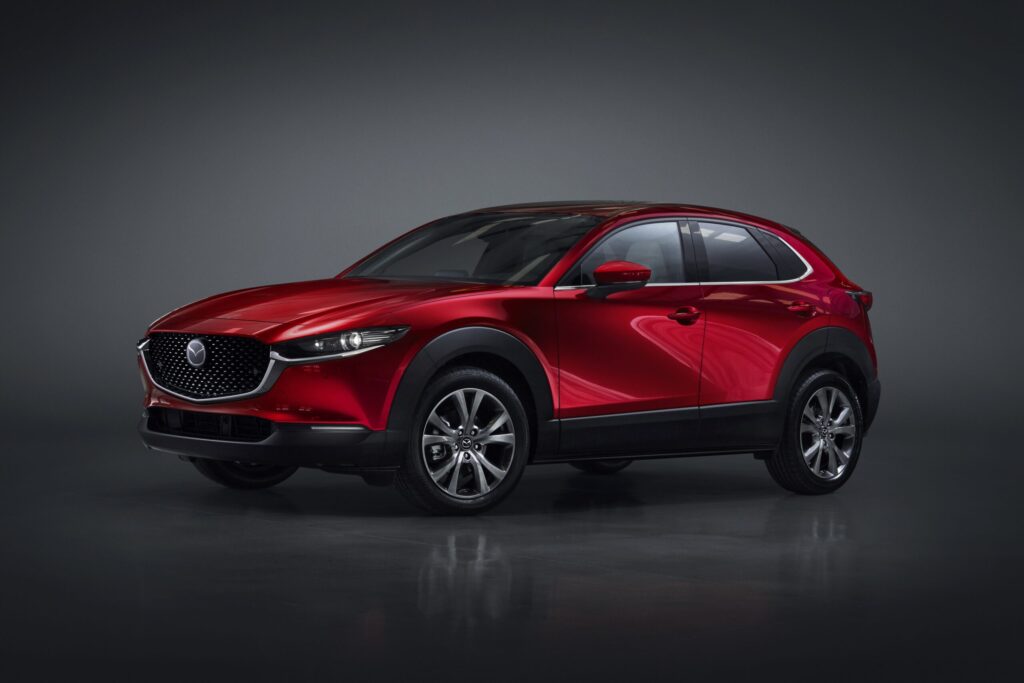Mazda CX-30 Fuel Efficiency: A Comprehensive Guide to Maximizing Your DriveWhen it comes to choosing a new vehicle, fuel efficiency is often a top priority for many drivers. Among the many options on the market, the Mazda CX-30 stands out as a compact crossover that balances style, performance, and, importantly, fuel economy.
In this blog, we’ll delve deep into the fuel efficiency of the Mazda CX-30, examining its key features, technology, and how you can maximize its MPG to save money and reduce your carbon footprint.

Table of Contents
Understanding Mazda CX-30 Fuel Efficiency
The Mazda CX-30, introduced in 2019, quickly became a favorite in the compact SUV segment. Known for its sleek design, advanced safety features, and engaging driving dynamics, the CX-30 also offers commendable fuel efficiency, which is an important factor for many prospective buyers.
Mazda CX-30 MPG Ratings:
The Mazda CX-30’s fuel economy varies depending on the engine choice and drivetrain configuration. Let’s break down the different options:
1) Mazda CX-30 with 2.5L Skyactiv-G 4-cylinder engine (Standard FWD)
- Fuel Efficiency: Up to 26 MPG in the city, 33 MPG on the highway, and a combined 29 MPG.
2) Mazda CX-30 with 2.5L Skyactiv-G 4-cylinder engine (Available AWD)
- Fuel Efficiency: Approximately 25 MPG in the city, 31 MPG on the highway, and a combined 27 MPG.
3) Mazda CX-30 with 2.5L Turbocharged Skyactiv-G 4-cylinder engine (AWD)
- Fuel Efficiency: Around 22 MPG in the city, 30 MPG on the highway, and a combined 25 MPG.
These ratings demonstrate that the Mazda CX-30 provides competitive fuel economy, particularly for a crossover SUV. The choice between front-wheel drive (FWD) and all-wheel drive (AWD), as well as the decision to opt for the turbocharged engine, will affect your overall fuel consumption.

Key Features Contributing to Mazda CX-30 Fuel Efficiency
Several innovative features and technologies help the Mazda CX-30 achieve its impressive fuel economy:
1. Skyactiv Technology
Mazda’s proprietary Skyactiv technology is at the heart of the CX-30’s efficiency. The Skyactiv-G engine optimizes fuel-air mixture, which improves combustion and reduces energy loss. This technology results in better fuel efficiency without sacrificing performance. Mazda’s engineers designed the Skyactiv engines to achieve high compression ratios, leading to improved thermal efficiency and lower fuel consumption.
2. Cylinder Deactivation
For the naturally aspirated 2.5L Skyactiv-G engine, Mazda employs a cylinder deactivation system. This technology automatically shuts down two of the four cylinders during light-load driving conditions, such as cruising at a steady speed. By reducing the number of active cylinders, the engine consumes less fuel, enhancing the Mazda CX-30’s fuel efficiency without compromising power when it’s needed.
3. i-Activ AWD System
Mazda’s i-Activ AWD system is designed to provide optimal traction and handling while minimizing fuel consumption. This system monitors road conditions in real-time and adjusts power distribution between the front and rear wheels to maintain stability and efficiency. The intelligent AWD system helps reduce unnecessary drag and enhances fuel economy, making the Mazda CX-30 a great choice for those who need all-wheel drive capabilities without sacrificing too much on MPG.
4. Aerodynamic Design
The sleek, aerodynamic design of the Mazda CX-30 also contributes to its fuel efficiency. The vehicle’s shape reduces drag, allowing it to move more smoothly through the air and consume less fuel. Mazda has invested in designing a vehicle that cuts through wind resistance with ease, improving highway MPG ratings.

Tips for Maximizing Your Mazda CX-30’s Fuel Efficiency
While the Mazda CX-30 is inherently designed for efficiency, there are several steps you can take as a driver to maximize its fuel economy further:
1. Maintain Proper Tire Pressure
Keeping your tires properly inflated is one of the simplest and most effective ways to improve your Mazda CX-30’s fuel efficiency. Under-inflated tires create more rolling resistance, which forces the engine to work harder and consume more fuel. Regularly check your tire pressure and ensure they are inflated to the manufacturer’s recommended levels.
2. Use the Correct Grade of Oil
Using the right engine oil grade can also impact your fuel efficiency. Mazda recommends using SAE 0W-20 oil with “Skyactiv” engines to ensure optimal performance and fuel economy. This synthetic oil provides excellent lubrication, reducing friction and helping the engine run more efficiently.
3. Avoid Aggressive Driving
Rapid acceleration, speeding, and frequent braking can significantly reduce your vehicle’s fuel efficiency. Try to drive smoothly and maintain a consistent speed. Utilizing the cruise control feature on highways can help maintain steady speeds and optimize fuel consumption.
4. Limit Idling
Idling can waste a surprising amount of fuel, especially in traffic or while waiting. If you anticipate being stationary for more than a minute, consider turning off the engine to save fuel.
5. Regular Vehicle Maintenance
Routine maintenance such as timely oil changes, air filter replacements, and engine tune-ups will ensure that your Mazda CX-30 is running at peak efficiency. A well-maintained vehicle is less likely to experience mechanical issues that could lead to increased fuel consumption.
6. Lighten Your Load
Carrying unnecessary weight in your vehicle can reduce its fuel efficiency. Clean out your trunk and remove any non-essential items to keep your Mazda CX-30 as light as possible. Reducing the load will minimize the energy required to accelerate and maintain speed.
Real-World Driving Experience with the Mazda CX-30
Drivers and automotive enthusiasts alike have praised the Mazda CX-30 for its balanced fuel efficiency and performance. Many appreciate its nimble handling, comfortable ride, and stylish interior while still achieving respectable gas mileage. Whether you’re commuting in the city or embarking on long road trips, the Mazda CX-30’s fuel economy makes it an appealing choice for a wide range of driving needs.

Comparing Mazda CX-30 Fuel Efficiency to Competitors
When comparing the Mazda CX-30’s fuel efficiency to other vehicles in its class, such as the Honda HR-V, Toyota C-HR, and Subaru Crosstrek, the Mazda holds its own. The CX-30’s MPG ratings are competitive, particularly when considering the engaging driving experience it offers. For example, the Honda HR-V and Subaru Crosstrek offer similar or slightly better fuel economy, but they may not match the Mazda CX-30 in terms of driving dynamics, interior quality, or available features.
The Future of Mazda CX-30 Fuel Efficiency
As Mazda continues to innovate with its Skyactiv technology and explores hybrid and electric powertrains, the future of the Mazda CX-30 looks promising in terms of fuel efficiency. In the coming years, we can expect even more advancements that will further reduce fuel consumption while maintaining the vehicle’s performance and driving enjoyment.
Conclusion: Why the Mazda CX-30 Stands Out in Fuel Efficiency
The Mazda CX-30 is more than just a stylish and practical crossover SUV; it also offers commendable fuel efficiency that makes it a smart choice for budget-conscious drivers and environmentally aware consumers. By understanding the features and technologies that contribute to its fuel economy and following some simple driving tips, you can make the most of every gallon of gas.
Whether you choose the standard Skyactiv-G engine or opt for the turbocharged variant, the Mazda CX-30 proves that you don’t have to compromise on performance, comfort, or style to get great fuel efficiency. So, if you’re in the market for a compact crossover that delivers on all fronts, the Mazda CX-30 is worth considering for its balanced approach to driving dynamics and fuel economy.
